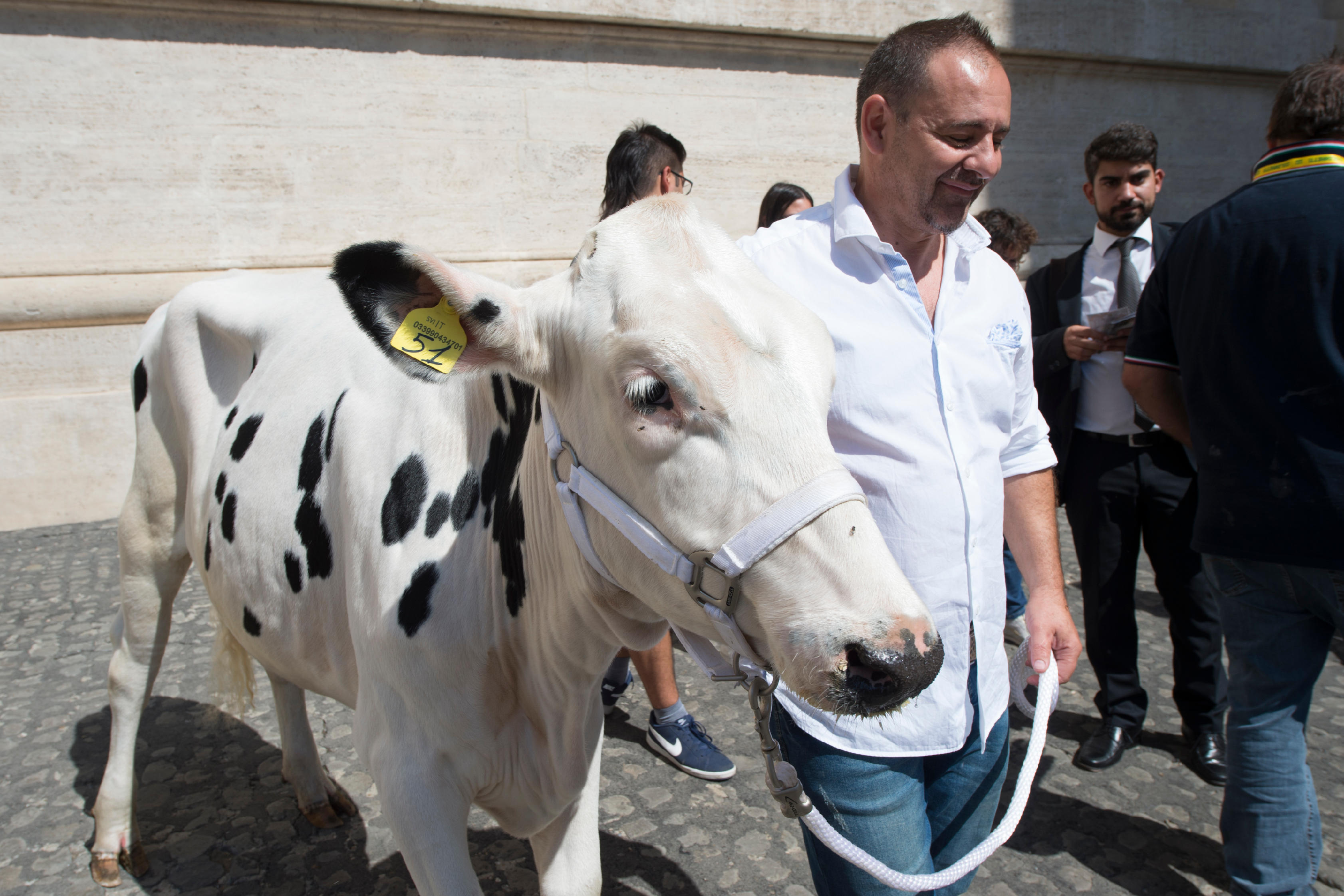A white heifer, named Lou in honor of the Marian shrine of Lourdes and in memory of a pilgrimage made by the Italian family Gramigna, was offered to Pope Francis during the general audience of Wednesday, September 13, 2017, in St. Peter’s Square.
The heifer will now be a new inhabitant of the farm in Castel Gandolfo, a pontifical summer residence about twenty kilometers south of Rome, L’Osservatore Romano says.
«We have brought to the pope what we have, which represents our life and our work,» say the farmers of the province of Piacenza in Emilia Romagna, more than 500 km from Rome.
The «animals of the pope» — a fox, small falcons, gazelles, wild boars, but also 25 cows, 300 hens, 60 chickens, bees and fish — live in Castel Gandolfo in the hills of Lake Albano.
In December 2014, the two donkeys – Théa and Noé – were added to the «animals of the popes.» The Lombard company Eurolactis Italiacon offered them to Pope Francis as a tribute to the Saint Francis of Assisi, protector of animals.
The milk of the cows of the farms of Castel Gandolfo has been used several times for newborns in the region of Castelli Romani. During the Second World War, Italian mothers came to obtain milk at the Pope’s farm, by order of Pius XII .
The milk of the farm was particularly appreciated at the time of the Chernobyl disaster in 1986, The cloud of radiation had polluted much of the Italian countryside. But the «Vatican cows» had been eating hay kept for years under cover of impermeable canvases. When the technicians came to check the milk, they found no trace of the radiation. Health authorities therefore advised mothers of young children to use milk from the Vatican farm.

Lou the cow at the General Audience © L'Osservatore Romano
Pope Receives Special Guest During General Audience
White Heifer Named «Lou» in Honor of Our Lady of Lourdes


